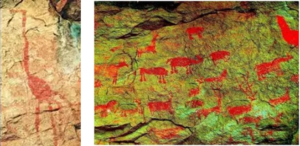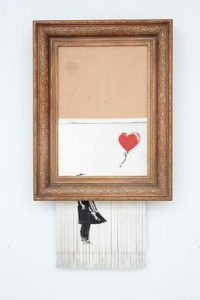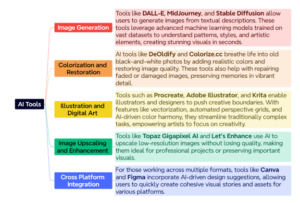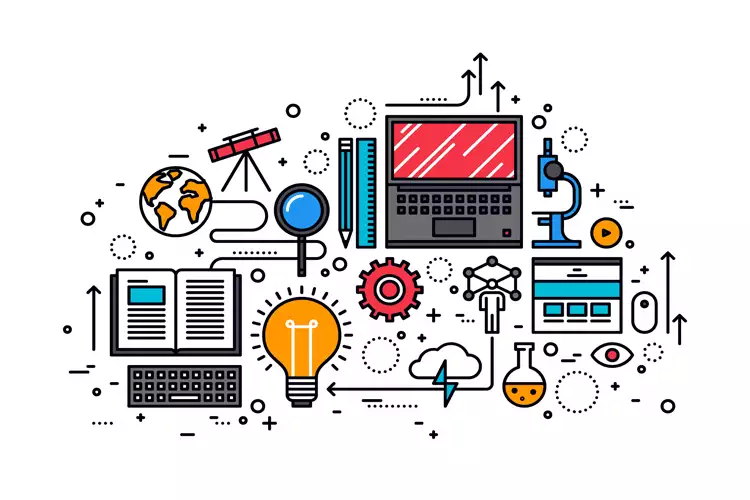In 2007 when archaeologists began exploration of the Ambadevi rock shelter in Madhya Pradesh, they came across a peculiar painting of a long wing-less bird, estimated to be roughly 25,000 years old and one of the oldest in India till date.
Based on DNA testing from eggshells in the cave, it was later hypothesized that the bird was an ostrich, suggesting that ostriches were native to India once, which were previously thought to survive only in Africa.
The discovery was new, but cave paintings have been around for a while now – humans have been visually documenting their experiences and knowledge since the Stone Age. These rudimentary yet expressive illustrations, made with natural pigments to depict hunts, rituals, and daily lives, served as timeless narratives and guides for future generations.

Inset: Cave Paintings in Ambadevi, Madhya Pradesh
Technological Evolution
As civilization advanced, so did the methods of creating and preserving these visuals.
- From papyrus-based drawings by Egyptians,
- Renaissance paintings Da Vinci,
- Still photography in the 19th century, to
- 20th century advancements like color photography and digital cameras
The once labor-intensive processes were replaced by instantaneous captures, laying the groundwork for the visual world we know today, but editing these images on an ex-ante(post) basis was difficult and required special tools and hours of training.
This all changed in 1987 when the Knoll brothers developed a simple software for displaying grayscale images on monochrome displays, which was later revamped as a full image editing program. A year later it was bought by Adobe and is now known as Photoshop, cementing itself amongst the likes of Google, Xerox and Paytm as products that define and dominate the use case.

Photoshop Through the Years
AI: Artistic Interpretation
In a recent episode of the Lex Fridman podcast, Dario Amodei, Co-founder and CEO of Anthropic – the company behind ‘Claude’, mentions how in the domain of writing as we moved from pen & paper to word processors and now to AI, the operational part of writing got simplified, freeing up time for the creative/thinking aspect.
This doesn’t necessarily mean that traditional writing or painting is obsolete now – in fact the most notable art pieces of today’s time, such as Banksy’s Love is in the Bin (later shredded at the auction and sold for $25Mn in 2018) still continue to be made entirely by the artist themselves.

Love is in the Bin by Banksy, 2018 (based on the Girl with a Balloon painting, 2006)
Speaking of AI, there’s a lot of discussion at the moment about AI replacing humans in creative fields like writing, painting and filmmaking, but as actor Ben Affleck put in an interview with CNBC – “AI is a craftsman who can learn to make wooden furniture by sitting down next to somebody and imitating them (the basic premise of large language models) without creating anything new. It can write verses from the Elizabethan era but it cannot write Shakespeare.”
Regardless of the limitations of AI, there are several use cases in this domain, some of which have been mentioned below.


Visual AI Tools Landscape: (Source)
VC Perspective
In a previous blog, we explored how text-based information can be made more engaging using AI tools. Building on that, illustrations such as infographics, charts, and other visual aids are particularly useful in breaking down complex ideas and ensuring content resonates with audiences.
Some of the tools we rely on to create visuals at Auxano include
- Xmind for mind maps and hierarchical charts (refer the AI tools chart above),
- Canva for designing major infographics and pictures, and even
- Google Docs for creating illustrations (including the Xmind sneak peek below)

Source: Xmind
Integrating visuals into content pieces enables effective communication, higher engagement, and deeper understanding of concepts. After all, a single picture is worth a thousand words
The Road Ahead: Vision and Efficiency
Looking ahead, AI in photography and illustration could redefine what creativity means. Imagine AI systems that collaborate with artists, offering ideas based on multi-media input or themes. Creators could shoot raw ideas, and AI could craft entire scenes that match the mood or intent.
While AI offers limitless possibilities, there’s also the concern for content originality and attribution, given that most of these tools are built on Large Language Models (LLMs) that use extensive user data to generate output (case in point Figma’s Make Design AI tool for creating designs using genAI was briefly shut down for copying the iOS app design)
Like early cave painters who shared information using rudimentary tools, today’s creators bring unique perspectives assisted by technology yet conceptualized and created by humans. The future lies in collaboration, where technology amplifies human potential without overshadowing it.
Author
Aditya Golani


